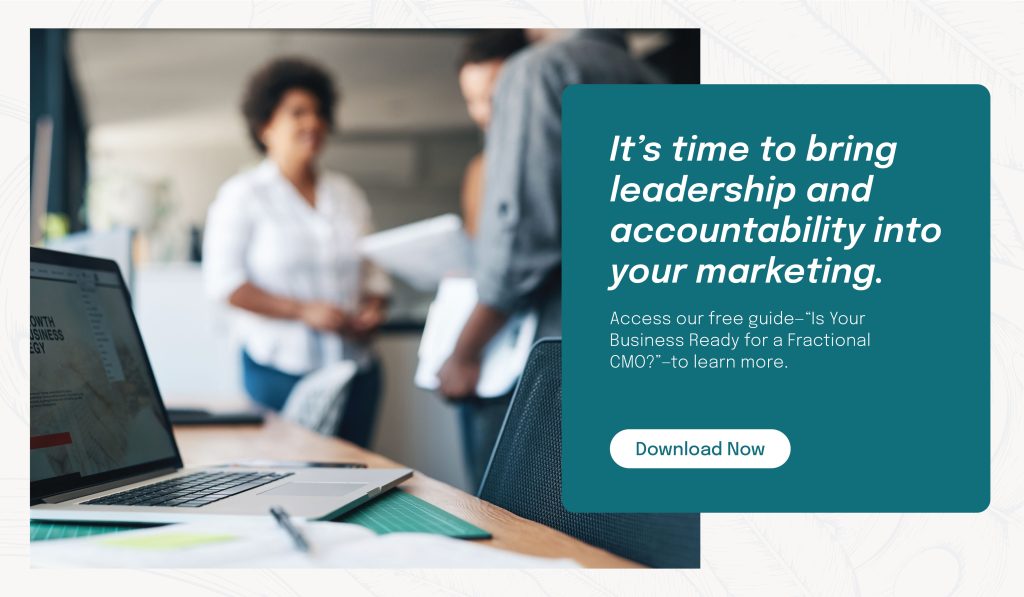As a small business owner, you likely already know that marketing trends come and go. One day, Reels are everything. The next, it’s all about carousels or long-form storytelling. And, just when you think you’ve cracked the algorithm, it changes again.
However, not all marketing is trend-dependent. There are evergreen strategies—foundational tactics that will continue to work no matter what new platform emerges or algorithm shifts. And, if you’re serious about sustainable growth, these are the strategies worth your time and investment.
1. Clear, Customer-Focused Messaging
When it comes to marketing, clarity wins every time. In fact, most people don’t choose the “best” product or service. They choose the one that’s easiest to understand.
If your messaging is vague, complicated, or full of industry jargon, potential customers won’t stick around to decode it. Their brains are wired to make quick decisions based on two questions:
- Is this useful to me?
- Do I need to pay attention right now?
If your messaging doesn’t answer those questions almost immediately, people will scroll past, click away, or move on to a competitor who communicates more clearly.
That’s why your marketing needs to be simple, direct, and focused on your customer’s needs—not just your credentials or achievements. It’s tempting to highlight your experience or list awards right away, but your audience is more interested in how you can help them solve a problem, reach a goal, or make life easier.
When your messaging is clear and customer-focused, you can cut through the noise, build trust quickly, and make it easier for your audience to choose you over your competitors.
2. User-Friendly Website
Your website is the foundation of your marketing. It’s the digital home base for your business, and—more often than not—it’s where all your marketing efforts lead to. Whether you're running ads, sending emails, or posting on social media, all of those tactics point back to your website. Because of this, you need to ensure that your website provides a user-friendly experience and helps your audience take the next step in working with you.
That means:
- It’s easy to navigate.
- It’s optimized for mobile.
- It clearly explains what you do and how someone can work with you.
- It includes a simple, strategic call to action (CTA).
Think about it. Have you ever gone on a website and left because it was too confusing or not immediately clear how they can help you? If a visitor lands on your site and can’t figure out what you offer, they’ll leave. A high-performing website builds trust, converts visitors into leads, and sets the tone for your brand experience.
3. SEO
Even the best website won’t help your business if people can’t find it.
Search engine optimization (SEO) is the practice of optimizing your website so that it ranks well in search engine results, especially Google. Why is this important? Because today, 68% of all online experiences start with a search engine, and the vast majority of people won’t look past the first page of results.
If your site isn’t showing up when potential customers are searching for the products or services you offer, you’re missing out on valuable leads, many of whom are actively looking to buy. In fact, SEO drives over 1,000% more traffic than organic social media, making it one of the most effective strategies for bringing in consistent traffic to your website.
Building a strong SEO strategy through keyword research, verified Google Business listings, reviews, strategic content marketing, and backlinks can help your business be discovered by people who are actively looking for your products or services. Unlike ads or social media posts, a strong SEO strategy builds momentum over time and keeps delivering results.
4. Email Marketing
With today’s heavy focus on social media, you may be wondering, “Is email marketing even worth it?”
The answer is a decisive yes.
It’s easy to overlook email marketing as “old school,” but the numbers tell a different story. The average ROI for email marketing is $36 to $40 for every $1 spent—far outperforming most other channels.
Why is it so effective? Because people on your email list have already expressed interest in what you do. Your emails go directly to their inboxes (unlike social posts, which may not be seen at all), and when you use email to serve your audience with helpful content, they’re more likely to become customers.
And the best part? You can use opt-ins—like downloadable guides, checklists, or exclusive offers—to grow your list with warm leads who are a great fit for your business.
5. Content Marketing
Content marketing is focused on creating valuable, relevant content that helps your audience, builds trust, and positions you as an expert in your industry.
Content marketing can take a variety of forms, such as:
- Blogs
- Social Media
- Email Newsletters
- Videos
- Podcasts
- Press Releases
- Infographics
- Case Studies
- And More
What type of content you create depends on what best fits your business and what your audience will most prefer. For example, if you’re targeting an older audience, TikTok videos may not be the best approach. You may want to try blogs or newsletters instead.
Regardless of the form, your content needs to focus on being informative rather than salesy. Instead of specifically promoting your products or services, content marketing’s goal is to provide information or resources that help your ideal clients see your business as a trusted resource.
Great content serves your audience at every stage of their buying journey—whether they’re just becoming aware of their problem or ready to make a purchase. And unlike ads, content continues to work for you long after it’s published.
6. Customer Reviews
People trust people, not companies. In today’s digital world, online reviews are often your first impression—and they carry a lot of weight.
Customer reviews act as social proof. They show that other people have trusted your business, had a positive experience, and believe your product or service delivered on its promise. When potential customers see that others like them have had success with you, it reduces uncertainty and builds confidence in your brand.
While there are sites specifically designed for reviews, Google has become the go-to spot for business reviews—housing over 73% of all online reviews. In fact, over 60% of consumers say they check Google reviews before visiting a business.
The key here is that you have to actively ask for reviews and make it easy for people to leave them. Most satisfied customers won’t think to do it on their own, but over 70% will leave a review if directly asked. That could be through a follow-up email, text, or simply a kind request at the end of a job or service.
7. Networking & Partnerships
While digital marketing tactics like SEO and email are crucial, one of the most underrated (yet incredibly effective) evergreen marketing strategies is building strong relationships through networking and partnerships.
By teaming up with businesses that serve a similar audience (but aren’t direct competitors), you can get in front of more potential clients who are already primed to be interested in what you offer. Plus, when someone hears about your business through a trusted source—like another business they already work with or a person they respect—they're far more likely to take you seriously and give you a chance.
You can develop a network of like-minded businesses and people by reaching out to local business owners who share the same values or field as your company. Be sure to attend community events or join local organizations like the Chamber of Commerce as well. More often than not, the best partnerships happen organically through genuine connections. You just have to put yourself out there.
8. Flywheel Marketing Method
One of the biggest challenges small and mid-sized business owners face is feeling like their marketing is never-ending. You post on social media, send an email, run an ad, and then you have to do it all over again next week. It can feel exhausting and unsustainable—especially when you’re not seeing consistent results.
While some marketing strategies rely on flashy and time-limited trends, the flywheel marketing method uses evergreen tactics to sync your website and online marketing efforts—and continually produce results without you having to constantly put effort into it.
Think of it like a hand-crank flashlight. You put in the effort up front, but once the flywheel is spinning, it keeps producing momentum with minimal maintenance.
This evergreen marketing strategy aligns most of what we’ve talked about here—your website, email marketing, clear messaging, content, SEO, etc.—into a cohesive and self-driving system that builds awareness, nurtures leads, and drives conversions automatically.
Marketing trends may change, but your business doesn’t need to chase every new tactic to grow. By focusing on evergreen marketing strategies—clear messaging, a strong website, SEO, email, content, and customer reviews—you can build a marketing foundation that works year after year.
Treefrog Marketing is a fractional marketing agency based in Lafayette, Indiana, offering executive-level marketing leadership backed by a professional team. Our tailored, data-driven solutions transform businesses, accelerate growth, and enhance customer experiences. For more information, please visit our website. You can also connect with us on X, Facebook, LinkedIn, and Instagram.





